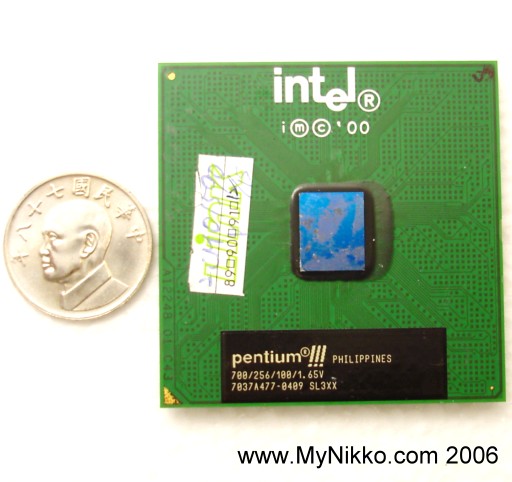Well, I did notice that, in the Task Manager, the load was half on both CPUs, rather than one CPU maxed and the other idle. Can't seem to adjust it, though.
For now, I'm using version 7.6 of the ATI multimedia apps that came on the AIW 8500's disc. The 8.x version on my 9600 XT's disc, as well as the 9.x version I downloaded from AMD/ATI's site both give me issues(trying to play the video files I record with ATI's File Player usually results in some sort of weird error, and then I can't see anything fed into the input breakout box until I reboot; maybe I should try just using the recording portion of the software and using an alternate media player like Winamp or VLC, or just avoiding the ATI software entirely by getting some other encoding software as well, hopefully an encoder that uses both CPUs).
Oh, I also tried the F6 trick with the bundled HPT366 driver floppy, but that didn't work for whatever reason. I would try installing the drivers while it's connected to the southbridge's IDE controller, but doing that under Win98SE while nothing's connected to the HPT366 broke the entire OS, needing a complete re-install. I'm not taking that chance with Win2000.
Finally, I'm wondering if it is indeed worth it to get two Celeron 366s to overclock to 550 MHz with a 100 MHz FSB, likely yielding much higher performance than my current 533s at 66 MHz FSB, but also draining funds from things like the components I could use to install Coppermine FC-PGA P3s instead.
...Oh, wait, aren't all those FC-PGA Coppermines without integrated heatspreaders? That means that I could catastrophically damage the CPU core if I push too hard trying to install one of my Thermaltake Golden Orbs on one, right? That's the last thing I want to happen when I spend my hard-earned money on something. I wouldn't have this problem with Tualatins, of course, but the BP6 fans haven't found out the magic formula for surefire FC-PGA2 Tualatin support with SMP enabled yet...

